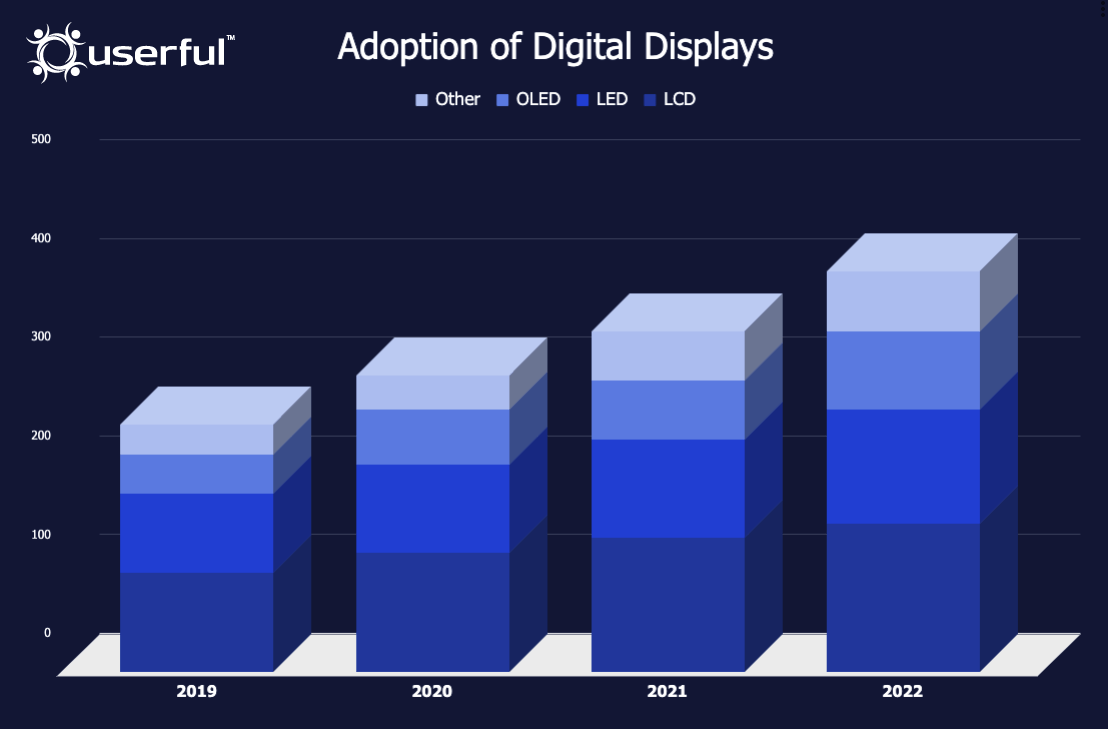Why Digital Displays Are so Important to Digital Transformation
The Leading Provider of AV as a Service (AVaaS)

Screens are now a cornerstone of the way we work, communicate, and collaborate.
Digital transformation is a hot buzzword today. At Gartner’s IT Symposium 2020, it was a repeated theme throughout the virtual event. Digital transformation means different things to different people (and different industries), but all digital transformation projects share a single driving force: modernization to ensure your business doesn’t fall behind.
Another thing every single digital transformation project has in common: there is a visual element. Digital transformation is so broad that the list of commonalities isn’t long, but when you think about it, you’ll realize it’s true: every digital transformation has a visual element.
Humans are visual creatures. 90% of the information transmitted to our brain is visual. We seek and need visual input. Video is today’s means of communication, screens are driving the self-service revolution, our phones are lifelines, and they’re not really phones. If you remember what a phone used to be, you’ll know today’s cell phone is a computer with a screen.
“The digital revolution is a screen revolution”
A recent study states that 70% of digital transformation projects did not meet their goals. There are lots of reasons behind those disappointing outcomes but almost all of them relate to people--to change management, to the mindset of the people involved. It’s worth making a few key points in that regard:
- People naturally gravitate towards displays and video, and those are key elements to communication, interactivity, and collaboration today.
- Digital transformation needs to make interfaces, points of interaction, and even the workplace itself intuitive, and intuitive means visual.
- The number of screens in use for customer engagement, corporate communication and collaboration is steeply climbing and projections see that growth curve rising.
This brings us to the “why I should care” part. Video, digital displays, screens, and video walls are fundamental elements of the IT landscape today, and that will only increase in the future. If you’re in IT, digital displays, large format screens, video walls, and even LED walls are now part of your job or the job of someone else on your team. If they aren’t now, they will be soon.
In the past, there has been a feeling amongst some IT professionals that the Audio Visual industry is stuck in the 90s. That’s simply not true. There are now options to run advanced video applications--digital screens of all kinds centrally through the cloud and with IT familiar tools. You can now deploy AV products on a purely IT stack: software, the network, and standards-based hardware (and sometimes with no additional hardware at all).
To help you navigate that world, we wrote the AV for IT Buyer’s Guide--an ebook devoted to helping IT people navigate the world of AV-over-IP and understanding their options to manage and control a worldwide network of digital displays, video walls, and LED walls: any content anywhere any time in real-time. Without any proprietary hardware involved.
Download it now. Learn what’s possible with screens today from video walls in control rooms and operation centers, to digital signage in retail. From screens for customer experience centers to video walls used to create unique immersive experiences. The convergence of AV and IT has transformed the landscape of video and digital displays and has turned them into an important tool to support the success of digital transformation projects of all kinds.
Userful
The Leading Provider of AV as a Service (AVaaS)